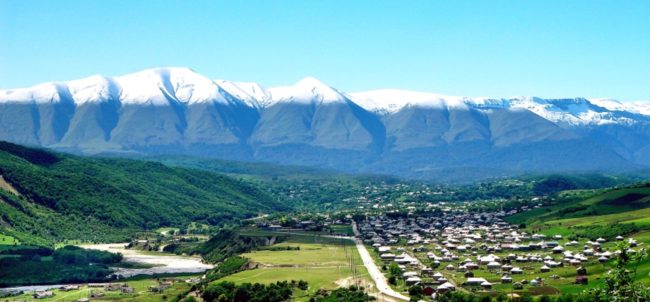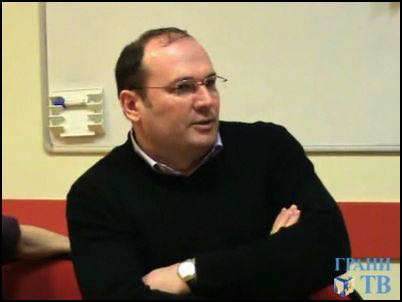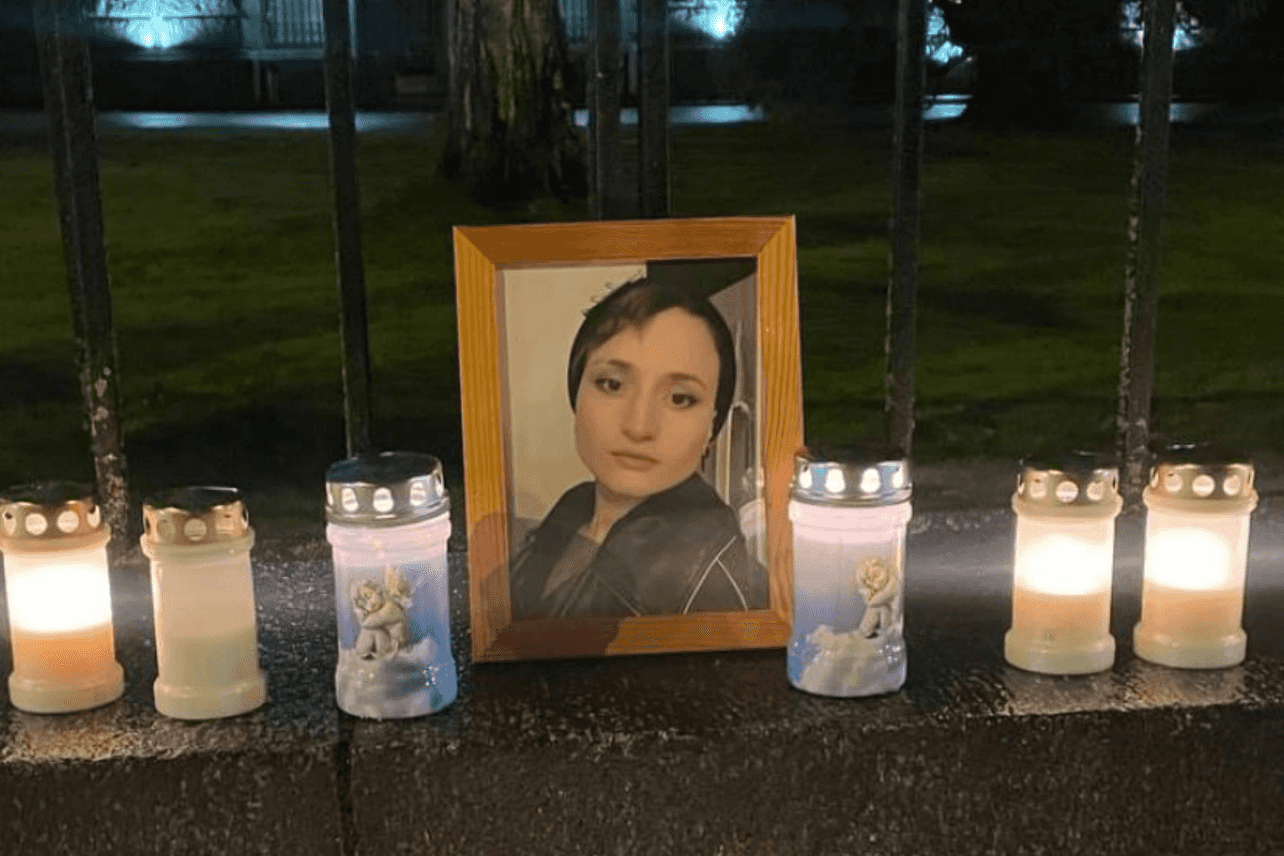

 Twelve people were injured, including three policemen, and nine were detained and taken to the police station as a result of a mass brawl in the village of Leninaul in the Kazbekovsky District of Daghestan on 25 June. The mundane dispute nearly turned into an ethnic conflict between Daghestanis and Chechens. About 500 Ingush and Chechens from Grozny left for Daghestan. While provocateurs in social networks were fanning the flames, high-ranking officials from both republics attempted to resolve the conflict.
Twelve people were injured, including three policemen, and nine were detained and taken to the police station as a result of a mass brawl in the village of Leninaul in the Kazbekovsky District of Daghestan on 25 June. The mundane dispute nearly turned into an ethnic conflict between Daghestanis and Chechens. About 500 Ingush and Chechens from Grozny left for Daghestan. While provocateurs in social networks were fanning the flames, high-ranking officials from both republics attempted to resolve the conflict.
[Read on OC Media: Daghestani head promises to restore historic Aukh District amidst rising tensions between Chechens and Avars]

Historian and publicist Mayrbek Vachagayev talked to OC Media about the events occurring in the Kazbekovsky District, the restoration of the historic Aukh District, and how the conflict came to be.
Mayrbek, do you have your own sources in the Kazbekovsky District of Daghestan? Do you receive first-hand information?
Mayrbek Vachagayev: Yes. I follow what is happening now in Aktash-Aukh — Leninaul. People send me videos and audio messages.
What is the situation like there now?
Mayrbek Vachagayev: People, of course, are still shaken up by the past events, but life is gradually returning to its regular pace. Even if some outsiders agitated the local population, the villagers themselves understand that they will have to live together and if something happens again, they will have to bear this problem on their own shoulders.
Conflicts in Leninaul between Chechens and Avars occur rather frequently. Local people themselves say that once every two or three years some mundane spat necessarily turns into an ethnic conflict. Let’s start from the very beginning, from the historical background. What is the nature of this region? Where do we find the roots of this conflict?
Mayrbek Vachagayev: In the 19th century, in 1859, after the conquest of the Caucasus by Russia, the Russian administration established a Kumyk district on the site of the present-day Khasavyurt, Babayurt, and Kazbekovsky Districts. The district lasted only a few years. In 1869, it was named Khasavyurt and divided into sections. The new district was included in the Tersky Region, so the administrative capital of the Khasavyurt District was Vladikavkaz, the same as for Grozny, Kabarda, Balkaria, Karachay, and Cherkessia.
Daghestan was a separate administrative unit. Present-day Daghestan and the Daghestan which existed when the Khasavyurt District was proclaimed are two different administrative territories. The border of the Daghestan region passed just above Petrovsk [from 1857 to 1921, the name of Makhachkala]. That is to say, the northern territories were not possessed by Daghestan, nor was the Khasavyurt District, which closely adjoined the Caspian Sea, and bordered along the Terek River with the Kizlyar Department to the north.
In 1917, as everyone knows, there was a revolution. At that time, living in the Khasavyurt District were Kumyks (a third of the population), Chechens (a quarter of the population), Avars at around 20%, and only 4.5% Russians. There were many Jews, almost 2.5%, a high percentage for the district.
After the revolution, in early 1921, Dzhemaladin Korkmasov, then the chairman of the Revolutionary Committee of the Daghestani Soviet Socialist Republic, succeeded in convincing Moscow to include the Khasavyurt District in Daghestan. Nothing terrible happened because the country was under one rule. Little changed other than the fact that the districts’ boundaries changed. All these boundaries were nominal. It was not so important then.
But Chechens living in Daghestan still managed to form their own small district. And in 1943, shortly before the deportation, the Aukh District was formed, absorbing exclusively villages where the absolute majority of the population were Chechens.
In 1944, when deportation began, the entire Aukh District was compactly moved along with all the Chechens. People from the mountainous part of Daghestan were brought down settle the lands of the deported people.
Many Avars settled in Chechnya; for example, in the Shali District; in Vedeno, Nozhay-Yurt, and Cheberloy Districts, all settlements were repopulated by Avars and Andis.
In 1956, the deportation was reversed, and the Chechens were allowed to return. What happened then? What happened is that the Avars had nowhere to return because they were not allowed to live in their former communities and many families lost their ancestral homes along with everything else. And now they couldn’t even live here, because the Chechens had come back. The Chechens did not understand why they could not live in their own homes. But, to the credit of the Avars and Andis who were resettled in Chechnya, they all left the houses of the Chechens, returning the property that they had found during their settlement. In the reports to the KGB of the USSR and the CPSU Central Committee, there were practically no conflicts recorded between the returning Chechens and Daghestanis then living in their homes. The transfer of property sometimes took place against the will of the authorities, who had been developing their own plans for the transfer for years; the people themselves understood and agreed on the release of the houses they occupied and handed them over to their Chechen owners.
The situation unfolded in a completely different manner in the Aukh District in Daghestan, where it was an issue of relocating an entire settlement whose inhabitants were not permitted to return to their homes abandoned in the mountains in 1944. It was necessary to negotiate with the whole village. The Soviet government was obviously not inclined to, shall we say, approve the redistribution of a district in Daghestan solely on the basis of community agreements, without the participation of the authorities, because they feared that such a redistribution could serve as an example for other districts — though there was no such acute problem in other districts at that time. The authorities decided it would suffice to allow Chechens to live in other districts and solve the problem that way. But the Chechens did not consider this an option. In the decades since, they have been fighting for their rights. Notice that they ask nothing from others. They want only the return of their property deprived of them for fictitious reasons in 1944.
And now we see that for so many years, that is from 1957 down to the present day, the problem has yet to be resolved. Many of those who returned in those years have already died. Some are living out their last years, but they have never been allowed to reinhabit their old homes.
[Read on OC Media: After 73 years, the memory of Stalin’s deportation of Chechens and Ingush still haunts the survivors]
The issue of restoring the Aukh District has been discussed since 1991. As far as I know, there is already even a plan, a detailed drawing indicating borders. What’s the catch? Why are they still stalling with this restoration?
Mayrbek Vachagayev: Actually, there are several reasons. Included in the Aukh District were all the villages now in the territory of the Novolaksky District, plus two settlements of the Kazbekovsky District. This is the village of Leninaul (the Chechens call this village Aktash-Aukh, founded by the Chechen teip Pkharchoy), Kalininaul (in Chechen Yurt-Aukh, Akki teip). But the fact is that the villages of Leninaul and Kalininaul make up a significant portion of the Aukh District, nearly a third of the whole district. So, these are very large territories. These villages and the village of Kishen-Aukh gave the area its historical name — Aukh. The Daghestani authorities say, ‘In the first stage, let’s leave these two villages out’. This is the reason why the Aukh District has not been restored to this day. In this case, it turns out that one third of the whole Aukh District will be cut off. Two-thirds of the population will have their rights restored while the rights of a third will remain unrealised. This is why the conflict continues down to this day.
Maybe the problem is that there is some fear that with the restoration of the Aukh District, its inhabitants will want to unite with Chechnya?
Mayrbek Vachagayev: This would not be so easy to do according to Russian legislation. Such an action requires the absolute agreement of both subjects of the Russian state. So, if Daghestan says ‘no’, no part of it, not one square meter, will be transferred to Chechnya.
But the fact is that the Chechens themselves who are living in Daghestan do not talk about unification with Chechnya. They say they want to have their own district in Daghestan. I do not think that the aim of restoring the Aukh District is uniting with Chechnya. Nobody says that it is necessary to unite with Chechnya. The only issue is that Daghestani Chechens, who compose a certain part of the population of the republic and who are listed in the republic’s constitution as one of its indigenous peoples, do not have the same rights as other Daghestani peoples.
We are talking about the violation of which rights exactly?
Mayrbek Vachagayev: For example, the quota for administrative personnel. And there is no broadcasting in Chechen on Daghestani television. There are no newspapers or books published in the Chechen language. Meanwhile, Chechens are the ninth largest ethnic group in Daghestan. Because of this, a Daghestani Chechen gets the feeling that he is not the same Daghestani citizen, not the same resident of the Republic of Daghestan as everyone else. The Aukh District would give them these rights and allow them to feel as masters of this land and to have a sense of being Daghestanis, part of Daghestan. Thus, today the issue is exclusively surrounding the restoration of the Aukh District within Daghestan. The authorities have already agreed to restore it, but in a truncated form, which the Chechens will not accept.
The events of the past few weeks in the Kazbek district of Dagestan all started with an everyday spat. But after the intervention of major political figures from both republics, it is difficult to talk about the domestic background of the conflict.
Mayrbek Vachagayev: There is simply no need to paint the problem as an ethnic conflict, the way some forces are now trying to do. If two boors have quarrell, and it turns out one is a Chechen and the other is an Avar, do we have to call this a fight between Chechens and Avars? I, for example, did not fight an Avar, and the Avars did not fight me. Why should these two people personify the two nationalities? Two fools fought. Let us proceed from this fact and not raise the cry, ‘Avars, rise up, the Chechens are beating us!’ or visa versa.
After a month these two guys who fought will meet at a restaurant in Khasavyurt and drink together. They do not care there was such a noise because of them. It sometimes happens that children fight and parents start quarrelling with each other because of the children. After 2–3 days the children play together again but the parents cannot bury the hatchet so fast; they have already internalised the conflict.
In this case, we can see a provocation carried out by nationalistic people — shortsighted people. Among them are many so-called scholars. I see their comments on social networks. Their scientific potential is so low that they try to score points with loud statements.
I recently read the post of a stranger unknown to me, an Avar. He wrote that a virus of hostility between Chechens and Avars has been unleashed. And under the post I read the comments of the Avar intelligentsia: ‘God grant that we avoid this virus’, ‘Save us, Almighty, from this virus’. So, the intelligentsia does understand the entire tragedy of this problem, and they are against this conflict. Also, as a rule, those people who talk tough in the comments will never actually fight; they will never be in a place where there is shooting. But these ‘keyboard warriors’ sitting at the computer do more harm than in open combat.
They just goad young people, those who truly care about their people. Of course, it’s good there are people ready to fight for their nation, but we need not belittle a different nationality living next door to us. Respect others. Once you see your greatness over others, over your neighbours of another nationality, you cease to be great! You cease to be a man and are reduced to the level of a beast.
And, well, there is yet another sort of provocateur. Instead of talking about peace, these write gibberish and baloney and preemptively deny the possibility of dialogue.
But even the authorities fail to create any opportunities for dialogue.
Mayrbek Vachagayev: The authorities have done their best not to solve this problem. At first they pretended that nothing had happened. As a result, it continued to boil. When a volcano rages, the lava has to break through to the surface somewhere.
It is very bad that after the war Chechnya became a mono-republic, where 98% of the population is Chechen. Ingushetia is the same, 97%. In the republics, it is easier to understand the problem of interethnic conflict. When representatives of different ethnic groups live closely together, it creates the chance to understand the culture of a neighbor: someone marries another, people have common businesses, things go on vigorously in this way. And it helps us to maintain peace and harmony.
But today we can see how obstacles are being created between Chechens, Avars, Andis and Laks with regard to this in the Aukh District. One village is divided into Chechen, Avar and Kumyk parts.
What mechanisms could improve this interethnic interaction in Leninaul?
Mayrbek Vachagayev: Today, when an Avar and a Chechen meet in the village and greet each other, they say ‘assalam alaikum’ but they think, ‘This Chechen wants to take Leninaul away from me’ and ‘This Avar doesn’t want to return my Leninaul to me’. We see that there is already a misunderstanding between people. It is important to show all the villagers that they are not each other’s enemies, but friends, neighbors and fellow villagers because whatever happens they are always going to be together, living next to each other.
These are simple things, but in fact it is important that people understand they do not need to lead a double life, thinking one thing and saying another. It must be made clear that this village has already become native to the Avar as well as the Chechen, and if the district is named Aukh, no one should leave. They have to find a common language among themselves, and no one should block this.
And what must be done for this? Bring the elders to the negotiating table?
Mayrbek Vachagayev: It’s not enough just to get the elders to the negotiation table. Over the past 30–40 years, the role of the institution of elders has changed dramatically. There is no longer unquestioning obedience. Young people are not prepared to rush into fire and water at the words of the elders. Though, of course, the elders should be calling on young people to avoid conflict…
Young people from this village should study in the same school and go to the same mosque. They must play sports in a single club and not create separate Chechen and Avar clubs. Unfortunately, what I observe among the population today is mistrust, and this is the most dangerous thing. It is necessary to help people overcome this mistrust so that they understand that they are residents of the same village. Today, society has more of the power, strength and ability to solve problems because people have not yet forgotten how to negotiate with each other.








